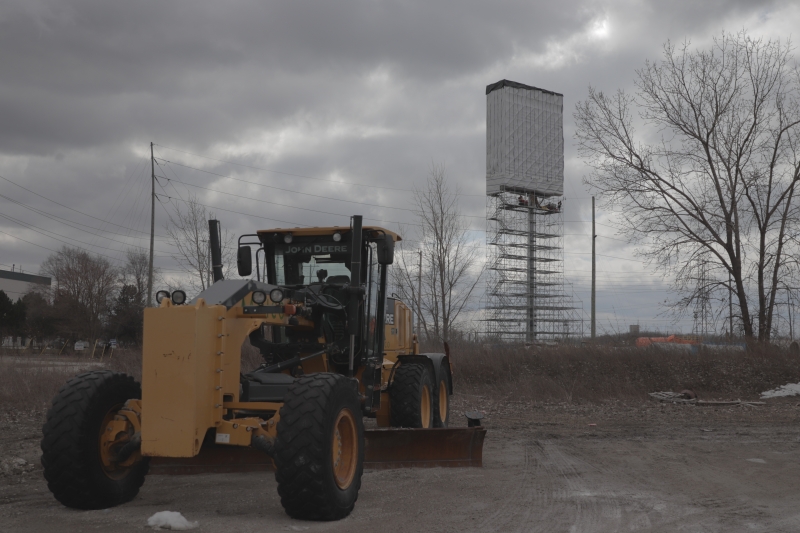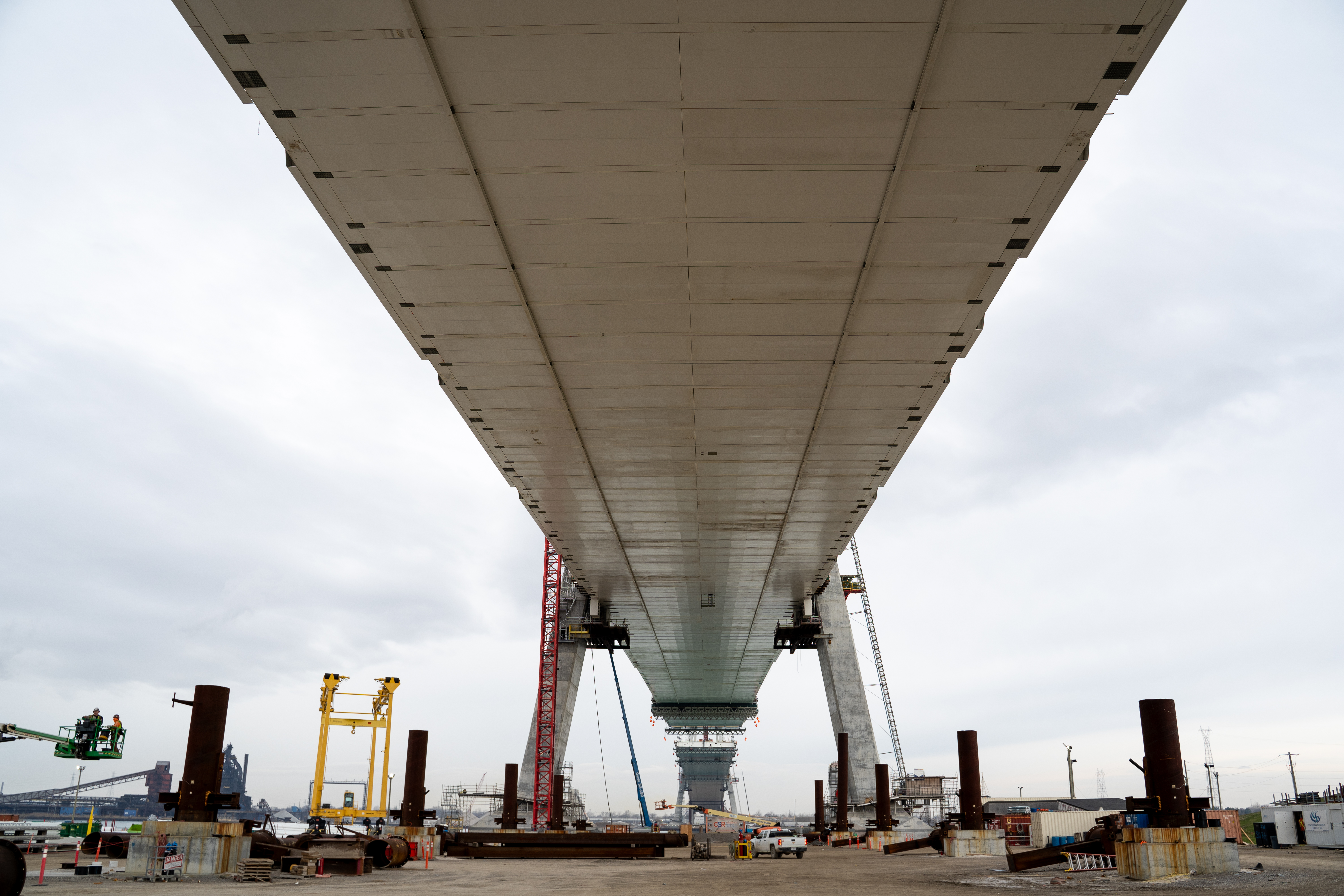The site of the future Canadian Port of Entry (POE) contains overhead lines that need to be relocated. Many of these overhead lines will be moved underground connecting the existing transformer station to new transmission towers.
Before this new complex electrical transmission system can become operational, it must be first tested to see if the new system can withstand the voltage being applied to it and to ensure no faults will occur once in service. The voltage applied to the system during testing is higher than the voltage once the system is put in service.
Underground
Over 7.5 kilometres (4.7 miles) of old high-transmission voltage cable have been moved underground and fluid in more than three kilometres (approximately two miles) of utility ducts.
The cable is housed in PVC pipe which protects the cables and allows for maintenance. The pipe is encased in thermal grout which improves electrical transmission by dissipating the heat generated by the electric power into the surrounding ground.
Once the grout has been installed, thermal resistivity testing takes place. This test measures the grout’s thermal properties (thermal conductivity and resistivity).
A heated probe is inserted into a hole drilled into the grout. The probe has a sensor which reads and collects data on how the grout reacts to heat. After the test is conducted, measurements of the grout’s thermal conductivity and resistivity are recorded. The results of the thermal resistivity test are compared to the design values to ensure that the underground cable system performs as expected.
Overhead lines
To test the new overhead lines, a scaffold is built around the tower and then enclosed in plastic. This creates a sterile environment and prevents foreign material from contaminating the transmission lines, which could cause a system failure.
Approximately 900 metres (328 feet) have been installed to date onto one of three new hydro towers.
To learn more about work being undertaken as part of the Gordie Howe International Bridge project, follow us on Twitter @GordieHoweBrg or like us on Facebook.


